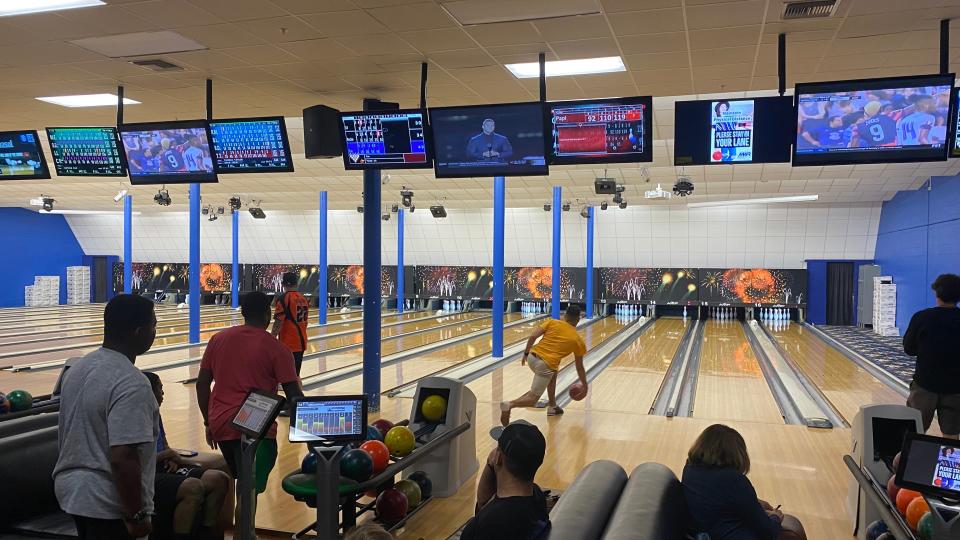I just returned from a visit to Guantanamo Bay — and I’m still processing how strange it was

It takes just a few minutes to drive from the abandoned shell of Camp X-Ray, one of the most notorious prison camps in the world, to Guantanamo Bay’s very own McDonald’s — from one symbol of America to another. To get there you drive past rows of wood panelled-houses with neat gardens and barbecues out back. You pass a school and a sports field. People jog along the roadway on their way to the beach. If that transition sounds jarring, it was. But it set the tone for my entire trip.
In my previous life as a Middle East correspondent, I visited a good number of military bases. There was Q-West base just outside of Mosul, Iraq, from which American soldiers fired thousands of rockets at Isis targets in the city. I went along to the Kurdish Syrian Democratic Forces’ base in Deir ez-Zor, a staging post for the final battle against Isis in Baghouz. I went inside the US-led coalition base in Baghdad, Iraq, situated within a fortress in the city’s Green Zone. All of them, without exception, were deeply strange places.
None of them came close to the strangeness of Guantanamo Bay.
I was among a small group of reporters recently granted access to the base to attend a pre-trial hearing for a prisoner held at the detention centre on the island. It was an important story, but I was equally as curious to see the base itself, and gain some insight into this deeply secretive place. As the War on Terror draws to an end, what does such a place stand for? What is its purpose?
The base has been there in some form for more than a hundred years. The US took control of the bay in 1898 during the Spanish-American war, and in 1903 signed a perpetual lease with the then-president which it claims still stands to this day. The current Cuban government, of course, views the base as an illegal occupation.
The official purpose of the base is to “preserve America’s strategic influence in the Caribbean.” The complex meanders 45 square miles across the deepwater bay and is home to some 6,000 soldiers and contract domestic workers, as well as their families.
In parts, it looks and feels more like an average American town than anything else. A noticeboard outside of a supermarket lists events and goings-on about the base — a “Blues BBQ” with stilt walkers and face-painting, bingo and bowling, pottery classes and trivia nights. You can even practice your shooting at the Ground Zero paintball range.
Such nods toward the normal felt especially jarring because I, like many around the world, have long associated the base with the detention facility that was set up in 2002 to house the “worst of the worst” in America’s long War on Terror; with orange jumpsuits, torture and ill treatment.
It was the question that almost all of the reporters on this trip were keen to ask the base’s new commander, Captain Samuel White, when we were granted an interview. We kept hearing from people who lived there that there was a giant misconception about what Guantanamo Bay actually was — so what did he think about it?
He described his role as that of a landlord, and the prison as just one tenant in his building. “I’m not making a judgement on good, bad, whatever, whether something needs to be put behind us. A tenant is here to do a specific mission and we have an obligation for the security and safety of all personnel on this installation,” he said. It might have been an opportunity to address supposed misconceptions — but there was a reluctance to talk about that part of Guantanamo’s past at all.
The commander typified the cognitive dissonance on the base, one that allows people to go along with their day as normal while prisoners are transported around them. A desire to move on without a reckoning. Perhaps that is not their job, as non-political members of the US Navy, but to an outsider visiting for the first time it felt absurd.
Meanwhile, the Biden administration is working to close the detention center quietly, and under the radar. The first prisoner to be transferred under Biden, Abdullatif Nasser, was transferred to his home country of Morocco a couple of weeks after we left the base. Biden’s goal is to ultimately close the base once the remaining 39 prisoners have been transferred to other countries.
And when the last prisoner has left, what will Guantanamo Bay be then? Will it return to being just another naval base? Or will it be seen as a relic, still, of another time? Will it fade from memory slowly, and become just a base on a foreign land whose government views its presence as illegal? Or will it remain a physical reminder of one of the darkest periods in modern American history, a place where, in the words of Barack Obama, the country “compromised our most precious values”?
Read More
Why shouldn’t state school pupils study Latin? Or are we all just here to toil our days away?
Laurel Hubbard and Edênia Garcia are trailblazers but trust me – inequality in sport is still rife
The financial boom will continue in the UK and US – politics demands it
The X Factor made great telly – but at what human cost?
Imagine paying money to meet Prince Charles – he really can’t do anything for you

 Yahoo News
Yahoo News 